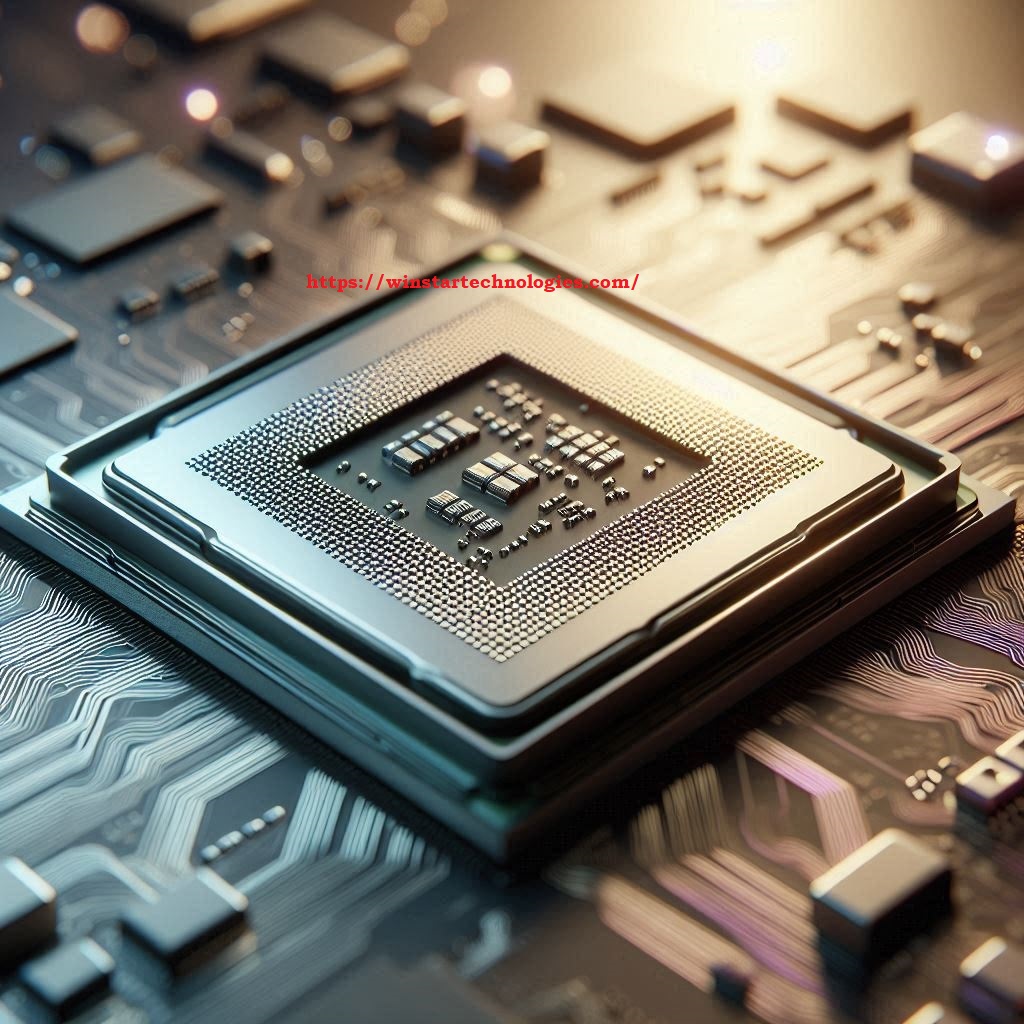Introduction to Computer Processors
A processor (or microprocessor) is the “brain” of a computer—a compact silicon chip embedded with millions (or even billions) of transistors that execute instructions from software and hardware. Officially known as the Central Processing Unit (CPU), it performs critical computations, manages system operations, and ensures seamless interaction between all computer components.
Modern processors are far more advanced than their predecessors, leveraging cutting-edge semiconductor technology to deliver blazing-fast speeds, energy efficiency, and AI-powered optimizations.

How Processors Works
The CPU follows a fetch-decode-execute cycle to process instructions:
- Fetch – Retrieves instructions from memory (RAM).
- Decode – Interprets the instruction using the Control Unit (CU).
- Execute – Performs calculations via the Arithmetic Logic Unit (ALU).
- Store – Sends results back to memory or storage.
Key Functions of a Processor
- Mathematical & Logical Operations (Addition, Subtraction, Comparisons)
- Data Movement (Transferring data between memory and storage)
- Decision-Making (Branching, loops, conditional operations)
- Multitasking (Handling multiple threads via hyper-threading and multi-core architecture)
Key Components of a CPU
| Component | Function |
| Control Unit (CU) | Manages instruction flow, decodes operations, and synchronizes tasks. |
| Arithmetic Logic Unit (ALU) | Handles mathematical calculations (+, -, ×, ÷) and logical comparisons (AND, OR, NOT). |
| Registers | Ultra-fast memory units storing temporary data for immediate processing. |
| Cache (L1, L2, L3) | High-speed memory reducing latency by storing frequently accessed data. |
| Clock Generator | Synchronizes operations via clock speed (measured in GHz). |

Evolution of Processor Technology (2025 Update)
Modern CPUs have evolved significantly, incorporating:
1. Smaller & More Efficient Transistors
- 5nm & 3nm Process Nodes (Apple M3, Intel Meteor Lake, AMD Ryzen 8000)
- Lower Power Consumption (Better performance-per-watt)
- 3D Stacking (Chiplets) – AMD’s Ryzen & Intel’s Foveros technology
2. AI & Machine Learning Acceleration
- NPUs (Neural Processing Units) – Dedicated AI cores (e.g., Intel AI Boost, AMD Ryzen AI)
- Tensor Cores – NVIDIA’s DLSS & AI upscaling in GPUs
3. Advanced Multi-Core Architectures
- Heterogeneous Computing (Combining performance + efficiency cores)
- Intel’s Hybrid Architecture (P-Cores + E-Cores)
- AMD’s Zen 4 & Zen 5 Chips
4. Integrated Graphics & AI Upscaling
- Intel Iris Xe, AMD RDNA 3, Apple M3 GPU
- Real-time Ray Tracing & DLSS 3.5 (NVIDIA RTX 40 Series)
5. Quantum & Neuromorphic Computing (Future Trends)
- IBM Quantum Processors (Qubit-based computing)
- Intel Loihi 2 (Neuromorphic AI chips mimicking the human brain)
Top Processor Manufacturers in 2024
| Brand | Key Products | Notable Features |
| Intel | Core i9-14900K, Core Ultra 7 | Hybrid Architecture, AI Boost |
| AMD | Ryzen 9 7950X3D, Ryzen AI | 3D V-Cache, Zen 4 |
| Apple | M3, M3 Pro, M3 Max | 3nm, Unified Memory |
| Qualcomm | Snapdragon X Elite | ARM-based, AI-Optimized |
| NVIDIA | Grace Hopper Superchip | AI & HPC Focus |
| Samsung | Exynos 2400 | RDNA 3 GPU, On-Device AI |
| IBM | Power10, Quantum Chips | Enterprise & Quantum Computing |
How to Choose the Best CPU in 2024
When selecting a processor, consider:
✅ Cores & Threads (8+ cores for gaming/content creation)
✅ Clock Speed (Higher GHz = faster single-core performance)
✅ Cache Size (Larger cache = better multitasking)
✅ Power Efficiency (TDP rating for laptops & small PCs)
✅ AI & GPU Integration (For machine learning & gaming)
Future of Processors: What’s Next?
🔹 2nm & 1.4nm Chips (2025-2026) – TSMC & Samsung roadmap
🔹 Photonics & Optical Computing – Light-based processors
🔹 More AI Integration – On-device LLMs (Like ChatGPT offline)
🔹 Neuromorphic & Quantum CPUs – Brain-like & qubit-based computing
Conclusion
The processor remains the heart of computing, evolving from simple silicon chips to AI-powered, multi-core beasts driving modern PCs, smartphones, and quantum machines. As Moore’s Law continues to push limits, future CPUs will unlock unprecedented speeds, efficiency, and intelligence.
Stay updated with the latest in CPU tech—your next upgrade could redefine performance!